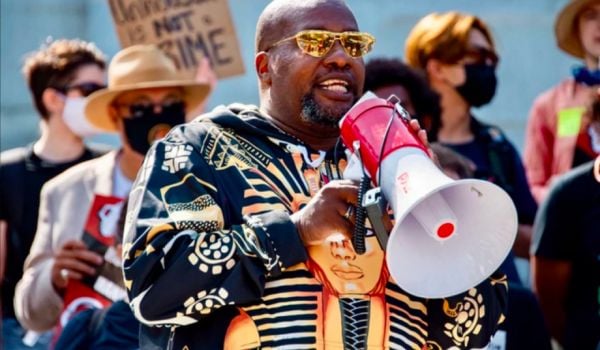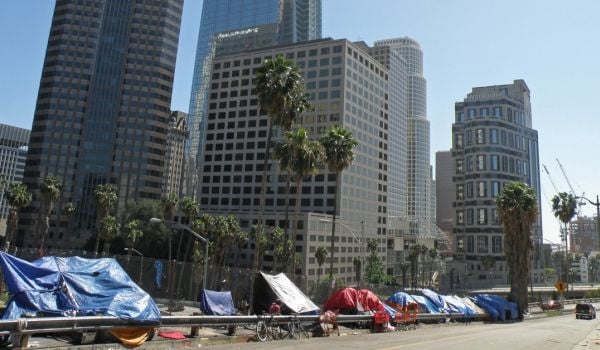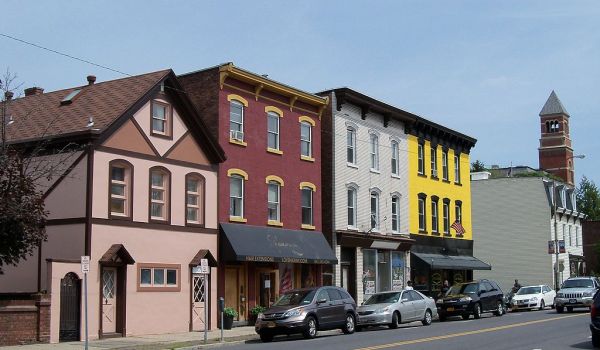California’s Laws to Spur New Housing Face Pushback From Cities
In 2021, California passed SB-9, a suite of revisions to its land use code intended to ease restrictions on building multifamily dwellings. Also known as the California Housing Opportunity and More Efficiency (HOME) Act, the bill requires cities to allow one additional residential unit on most single-family parcels across the state. It went into effect this January. But since Governor Gavin Newsom signed SB-9 into law in September 2021, cities across the state have passed laws undermining it and in some cases declared themselves exempt based on flimsy legal grounds, according to CalMatters. (Over 240 cities had sent a letter to Governor Newsom asking him to veto SB-9.)
The state has largely left monitoring violations of SB-9 to pro-housing activists and nonprofit watchdogs, CalMatters reports, as the work apparently exceeds the scope of the 25 staff at the state’s housing department tasked with enforcing the laws. Some cities have passed restrictive building ordinances in violation of state law. According to CalMatters, the state’s attorney general and housing department do not keep a centralized list of the anti-SB-9 laws, some of which are legal, relying instead on advocates to bring violations of state law to their attention. One organization found 81 laws meant to subvert SB-9 across the state.
The pushback to SB-9 and the brazen attempts to subvert it across the state signify that much more than land use changes are needed to spur new housing construction. States also need legal tools, incentives and enforcement to make sure that cities are complying, or they risk creating a hodge-podge of uneven housing development.
Newark Moves Closer to Accepting Homeless New Yorkers
Newark, New Jersey’s city council voted last week to end an ordinance that restricted NYC from moving unhoused people into the city, City Limits reports. The ordinance concerned NYC vouchers — called Special One Time Assistance (SOTA) — that supplemented a year of rent for homeless New Yorkers exiting the shelter system. NYC’s Department of Homeless Services (DHS) reviewed and approved leases for those voucher-holders in Newark apartments. Newark is a 15-minute train ride from NYC, and many unhoused New Yorkers are locked out of the tight housing market in their city.
Many of the Newark buildings scouted by DHS at the beginning of the SOTA program were decrepit. Landlords who were paid a year’s worth of rent upfront had less incentive to maintain tenants’ units, critics pointed out. Newark mentioned the poor conditions when it filed a lawsuit in 2019.
But Newark officials, including Mayor Ras Baraka, were not just concerned about the conditions of buildings. They were also opposed to unhoused New Yorkers relocating to their city. Newark passed a pair of laws to end the practice, including a ban on out-of-state vouchers exceeding one month’s rent, and an ordinance banning “bringing a needy person to the City of Newark.” Last week, Newark officials voted down the latter vaguely-worded law, partially in response to a 2020 lawsuit from the Legal Aid Society taking issue with both laws.
Newark officials have not agreed to drop their own lawsuit nor to lift the ban on out-of-state vouchers, City Limits reports. But removing the “needy person” ordinance does open the city up to other programs meant to rehouse people from out of state, a necessary step given the overlap between Newark and NYC’s rental markets.
Deaths of Homeless Los Angelenos Spiked During Pandemic
A recently-released report by Los Angeles County’s Department of Public Health found a stark increase in deaths among people experiencing homelessness before and after the pandemic took hold. In the 12 months before the pandemic impacted the county — which the report distinguishes as April 1, 2019, to March 31, 2020 — there were 1271 deaths. In the following year — April 1, 2020, to March 31, 2021 — there were 1988 deaths. The report attributes most of that increase to the pandemic but not necessarily the virus itself. There were 179 deaths attributable to Covid-19 among people experiencing homelessness in the year after the pandemic arrived in L.A. County. A large number of deaths but a small part of the overall increase.
The biggest increase in mortality came from drug overdoses, which jumped by 313 deaths during the pandemic, an increase of 78% over the previous year. Methamphetamine contributed to 75% of those deaths, compared to 45% in which fentanyl was a contributing factor. (Most overdose deaths involved multiple drugs.) But the role of fentanyl is growing, as it contributed to 27 percent of overdose deaths among people experiencing homelessness in the year prior.
Tragically, the increase in deaths is happening mostly among younger Angelenos. There was a 106% year-over-year jump in deaths among people 18-29 years old and a 70% jump in deaths among 30-49-year-olds. The report’s authors suggest that overall stressors that increased during the pandemic led to a spike in nearly every type of death. “While COVID-19 became the third leading cause of death among (people experiencing homelessness) in the post-pandemic onset year, the overall increase was driven to an equal or larger degree by increases in OD, homicide, CHD, and traffic injury deaths,” the report says. “It appears the COVID-19 pandemic may have exacerbated stressors already present in the lives of (people experiencing homelessness), leading to increases in other causes of death, even as we redoubled our COVID-19 prevention efforts in this population.”
Because annual point in time counts were canceled due to the pandemic, the report’s authors caution that there is no way to know how the overall death rate changed year over year. It’s possible that the population of unhoused Angelenos grew dramatically over the pandemic. The report follows a December 2021 UCLA report which found 1,493 people living outdoors died between March 2020 and July 2021.
This article is part of Backyard, a newsletter exploring scalable solutions to make housing fairer, more affordable and more environmentally sustainable. Subscribe to our weekly Backyard newsletter.

Roshan Abraham is Next City's housing correspondent and a former Equitable Cities fellow. He is based in Queens. Follow him on Twitter at @roshantone.

















